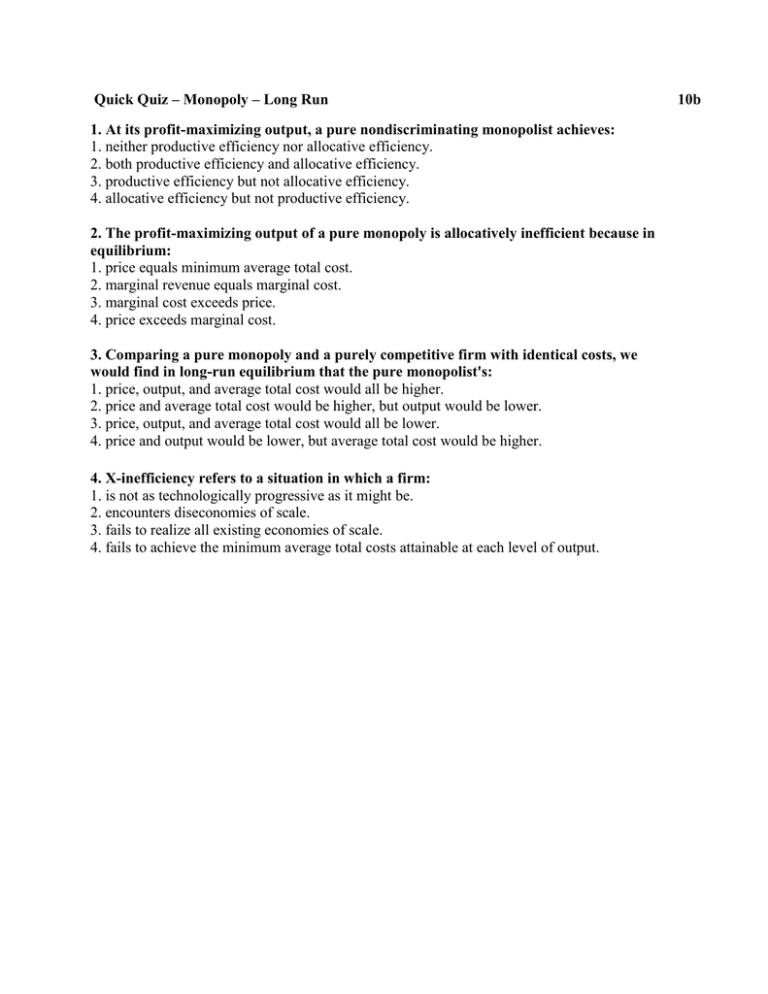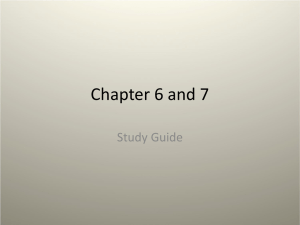10b
advertisement

Quick Quiz – Monopoly – Long Run 1. At its profit-maximizing output, a pure nondiscriminating monopolist achieves: 1. neither productive efficiency nor allocative efficiency. 2. both productive efficiency and allocative efficiency. 3. productive efficiency but not allocative efficiency. 4. allocative efficiency but not productive efficiency. 2. The profit-maximizing output of a pure monopoly is allocatively inefficient because in equilibrium: 1. price equals minimum average total cost. 2. marginal revenue equals marginal cost. 3. marginal cost exceeds price. 4. price exceeds marginal cost. 3. Comparing a pure monopoly and a purely competitive firm with identical costs, we would find in long-run equilibrium that the pure monopolist's: 1. price, output, and average total cost would all be higher. 2. price and average total cost would be higher, but output would be lower. 3. price, output, and average total cost would all be lower. 4. price and output would be lower, but average total cost would be higher. 4. X-inefficiency refers to a situation in which a firm: 1. is not as technologically progressive as it might be. 2. encounters diseconomies of scale. 3. fails to realize all existing economies of scale. 4. fails to achieve the minimum average total costs attainable at each level of output. 10b 5. The monopolistic (monopoly) market model in long run equilibrium is portrayed in the above figures by: 1. Figure A. 2. Figure B. 3. Figure C. 4. Figure D. 6. Use the figure above for a monopoly in long run equilibrium to answer this question. What quantity will this monopolist produce and what price will it charge? 1. quantity 0Q; price 0B 2. quantity 0M; price 0C 3. quantity 0M; price 0A 4. quantity 0n; price 0B 7. Use the figure above for a monopoly in long run equilibrium to answer this question. The allocatively efficient quantity is 1. 0M 2. 0N 3. 0Q 4. 0R 8. Use the figure above for a monopoly in long run equilibrium to answer this question. The productively efficient quantity is 1. 0M 2. 0N 3. 0Q 4. 0R 9. Use the figure above for a monopoly in long run equilibrium to answer this question. In long run equilibrium this firm will 1. produce too much. 2. produce too little. 3. produce the efficient quantity. 4. not produce anything at all.









